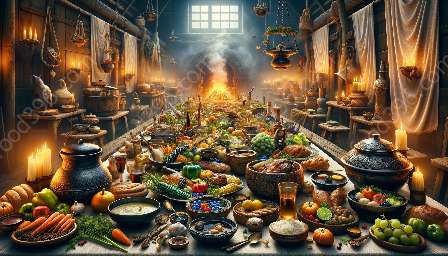Thailand's traditional food culture is a rich tapestry of flavors, cooking methods, and historical influences that have shaped the nation's diverse culinary heritage. From tangy and spicy curries to aromatic rice dishes, traditional Thai cuisine is a feast for the senses.
Food Culture and History
Thai food culture is deeply rooted in the country's history and traditions, with influences from neighboring countries such as China, India, and Malaysia. The blending of these culinary traditions has resulted in the unique and vibrant cuisine that is synonymous with Thailand today.
Traditional Food Recipes and Cooking Methods
Traditional Thai food recipes often feature a harmonious balance of sweet, sour, spicy, and savory flavors, achieved through the skillful use of ingredients such as lemongrass, galangal, coconut milk, and Thai basil. These ingredients are combined using diverse cooking methods, including stir-frying, steaming, and grilling, resulting in a delicious array of dishes that showcase the depth and diversity of Thai cuisine.
Flavors and Ingredients
Thai cuisine is renowned for its bold and aromatic flavors, with dishes often incorporating a combination of fresh herbs, spices, and condiments such as fish sauce, shrimp paste, and chili. The use of fresh, locally sourced ingredients is central to traditional Thai cooking, ensuring that each dish bursts with the vibrant flavors and colors that are emblematic of Thai cuisine.
Regional Variations
Thailand's diverse regions, each with its distinct geographical and cultural characteristics, have given rise to a wide range of regional variations in traditional Thai cuisine. From the fiery dishes of the Northeastern Isaan region to the coconut-infused curries of the Southern provinces, exploring the regional nuances of Thai cuisine offers an enriching culinary journey.
Cultural Significance
Food plays a central role in Thai culture, serving as a means of celebration, connection, and hospitality. Traditional Thai meals often involve communal eating, with shared dishes and an emphasis on harmony and balance in flavors and textures. The preparation and enjoyment of food are deeply intertwined with Thai customs and traditions, reflecting the importance of food as a unifying force in the country's social fabric.
Conclusion
Traditional Thai food culture is a vibrant tapestry of history, flavors, and traditions, reflecting the rich heritage of the Thai people. From the aromatic spices and ingredients to the diverse regional variations, exploring traditional Thai cuisine offers a captivating journey into the heart of Thailand's culinary legacy.

